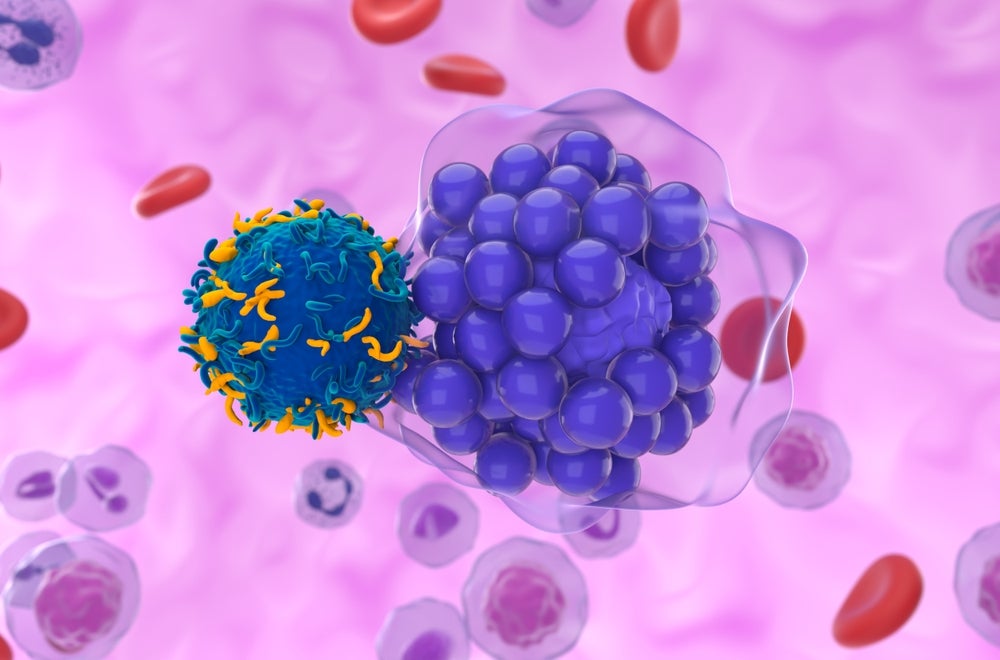New LRRK2 Variant Alters Parkinson’s Protein Interaction
In a groundbreaking study published in npj Parkinson’s Disease, researchers led by Vela-Desojo, Pascual, and Montal have unveiled a newly identified variant of the LRRK2 gene that has significant implications for the pathogenesis of Parkinson’s disease. This discovery sheds critical light on the molecular interactions governing neuronal function and opens new avenues for targeted therapeutic […]


In a groundbreaking study published in npj Parkinson’s Disease, researchers led by Vela-Desojo, Pascual, and Montal have unveiled a newly identified variant of the LRRK2 gene that has significant implications for the pathogenesis of Parkinson’s disease. This discovery sheds critical light on the molecular interactions governing neuronal function and opens new avenues for targeted therapeutic interventions in one of the most prevalent neurodegenerative disorders worldwide. The study’s focus on the LRRK2 variant’s altered binding to RAB8A molecules reveals intricate biochemical disruptions that might underpin the neurodegenerative cascade leading to Parkinsonian symptoms.
Leucine-rich repeat kinase 2 (LRRK2) has long been a molecule of intense interest in Parkinson’s research. It functions as a large, multidomain protein kinase involved in various intracellular signaling pathways, including those regulating cytoskeletal dynamics, vesicular trafficking, and immune responses. Mutations in LRRK2 are amongst the most common genetic contributors to familial Parkinson’s disease, and their pathophysiological mechanisms have been hotly debated. The newly described variant reported in this study emphasizes the nuanced ways in which subtle genetic differences can alter LRRK2’s interactions with critical molecular partners like the small GTPase RAB8A.
The biochemical and structural characterization of this novel variant reveals that its capacity to bind RAB8A—a key regulator of vesicle trafficking and membrane dynamics—is compromised. RAB8A plays essential roles in endosomal sorting, ciliogenesis, and the maintenance of neuronal polarity. Disruptions in this binding could precipitate cascade effects, altering intracellular transport processes pivotal for neuronal survival and synaptic function. Given that compromised vesicular trafficking has been implicated extensively in neurodegenerative disorders, these findings provide a mechanistic link between genetic mutations and cellular dysfunction in Parkinson’s disease.
.adsslot_osQLCZfNKj{width:728px !important;height:90px !important;}
@media(max-width:1199px){ .adsslot_osQLCZfNKj{width:468px !important;height:60px !important;}
}
@media(max-width:767px){ .adsslot_osQLCZfNKj{width:320px !important;height:50px !important;}
}
ADVERTISEMENT
One of the striking aspects of this research is the use of patient-derived cell lines combined with sophisticated biochemical assays to quantify how the variant LRRK2 affects RAB8A binding affinity and downstream signaling. By precisely measuring binding kinetics and phosphotransfer events, the investigators determined that the mutant protein exhibits reduced association with RAB8A, leading to impaired recruitment of downstream effector proteins essential for endosomal maturation. This molecular defect was correlated with observed cellular phenotypes such as abnormal lysosomal morphology and deficient autophagic flux, both hallmarks of Parkinson’s pathology.
Further molecular modeling provided insights into the conformational alterations in the LRRK2 protein that underlie these binding deficits. The variant induces subtle shifts in the arrangement of LRRK2’s ROC-COR domain, affecting the nucleotide-binding pocket and consequently modulating kinase activity and protein-protein interaction dynamics. These structural perturbations offer an explanation for the variant’s dominant negative effect observed in cellular models and help reconcile discrepancies in previous literature concerning LRRK2 mutations with varying pathogenic potentials.
Notably, this research highlights the differential impact of various LRRK2 mutations on intracellular trafficking pathways, suggesting that each mutation might contribute uniquely to the disease phenotype by affecting specific molecular interactions. The variant presented here, by compromising RAB8A binding, selectively disrupts secretory and endocytic pathways crucial for maintaining neuronal homeostasis. This mutation-specific pathomechanism underscores the need for tailored therapeutic strategies rather than one-size-fits-all approaches in treating LRRK2-associated Parkinson’s disease.
The clinical context of this study is particularly compelling. The variant was identified in a multigenerational family afflicted with Parkinson’s, and the segregation analysis demonstrated a strong correlation between the mutation and disease penetrance. This genetic evidence, combined with molecular data, strengthens the causative link between the variant and Parkinsonian neurodegeneration. Moreover, it raises the prospect of genetic screening in at-risk populations for early diagnosis and intervention.
Therapeutically, the findings pave the way for novel drug discovery targeting the aberrant LRRK2-RAB8A interaction. Current LRRK2 inhibitors primarily focus on kinase activity modulation, but this study suggests that stabilizing or enhancing the defective protein-protein interaction may be a promising complementary strategy. Small molecules or biologics designed to rescue RAB8A binding could ameliorate vesicular trafficking deficits and slow down neurodegeneration progression.
In addition to its therapeutic implications, this study also contributes significantly to our fundamental understanding of Parkinson’s disease biology. It reinforces the concept that disturbances in intracellular transport are central to the disease’s etiology and that genetic mutations can selectively impair specific molecular axes. This nuanced view encourages a holistic approach to studying neurodegeneration that integrates genetics, cell biology, and protein chemistry.
Furthermore, the involvement of RAB8A adds to the expanding list of RAB GTPases implicated in Parkinson’s disease, including RAB29 and RAB10, which are known to interact functionally with LRRK2. This convergence on the RAB family highlights a critical nexus of vesicular regulation that may represent a vulnerability exploited by pathogenic mutations. Understanding how LRRK2 mutations alter this broader RAB network will be essential for developing comprehensive therapeutic frameworks.
Technical advances leveraged in this study included CRISPR/Cas9 gene editing to engineer cell lines harboring the variant, along with quantitative mass spectrometry to profile phosphorylation changes evoked by mutant LRRK2. These state-of-the-art tools enabled the dissection of subtle biochemical changes that traditional methods might have missed, exemplifying how integrative technologies accelerate discoveries in neurodegenerative disease mechanisms.
The study also raises intriguing questions regarding the temporal sequence of pathological events. Does impaired RAB8A binding trigger early vesicular trafficking defects that culminate in neuronal death, or does it act in concert with other LRRK2-mediated dysregulations such as mitochondrial dysfunction and neuroinflammation? Ongoing research building on these findings will be pivotal to discerning the precise pathological hierarchies and identifying critical intervention windows.
Importantly, this research exemplifies the power of multidisciplinary collaboration in tackling complex diseases. The combined expertise in structural biology, molecular genetics, and clinical neurology enriched the study’s scope and impact. Future endeavors uniting cell biologists, medicinal chemists, and clinicians will be essential to translate molecular discoveries into effective treatments.
The identification of this novel LRRK2 variant not only expands our genetic catalog of Parkinson’s disease mutations but also challenges existing paradigms by linking specific binding defects to disease etiology. As the field moves forward, integrating such molecular insights with patient-centered studies will help realize the goal of personalized medicine in Parkinson’s disease, where treatment regimens are tailored to individual genetic and molecular profiles.
Ultimately, this research marks a pivotal advance in decoding the molecular complexity of Parkinson’s disease. The defective interaction between LRRK2 and RAB8A uncovered here provides a compelling target for future drug development and offers hope for improved therapeutic strategies that may halt or reverse disease progression in affected individuals.
Subject of Research:
A novel variant of the LRRK2 gene and its impact on binding to RAB8A in the context of Parkinson’s disease pathogenesis.
Article Title:
A new LRRK2 variant in a family with Parkinson’s disease affects binding to RAB8A.
Article References:
Vela-Desojo, L., Pascual, A., Montal, V. et al. A new LRRK2 variant in a family with Parkinson’s disease affects binding to RAB8A. npj Parkinsons Dis. 11, 154 (2025). https://doi.org/10.1038/s41531-025-00989-y
Image Credits: AI Generated
Tags: biochemical disruptions in Parkinson’scytoskeletal dynamics and neurodegenerationgenetic contributors to familial Parkinson’s diseaseintracellular signaling pathways in neuronal functionlarge multidomain proteins in neurobiologyLRRK2 gene variant in Parkinson’s diseasemolecular characterization of LRRK2 variantneurodegenerative cascade and Parkinsonian symptomsprotein interactions in neurodegenerative disordersRAB8A binding and Parkinson’s pathogenesistargeted therapies for Parkinson’s diseasetherapeutic implications of LRRK2 mutations
What's Your Reaction?

































